Going Beyond Cottagecore Aesthetics: Social Implications
A little thatched-roofed cottage in the middle of nowhere, lavish afternoon teas in a garden surrounded by homegrown plants and vegetables, sounds dreamy, right? The Cottagecore aesthetic encompasses all of that and much more.
Amidst all the ruffles, flowy long dresses, reading poetry like you are the main character, manifesting, learning about the power crystal stones inhabit, baking deliciously indulging banana bread loaves (the list of proposed pastime activities goes on endlessly), a more contentious side lies in the Cottagecore trend.
In our first part on this topic, we have already expounded upon the definition as well as where the aesthetic is historically rooted, and why it suddenly rose in popularity. So, if you need a quick refresher or missed this one skim through it over here to get the full picture.
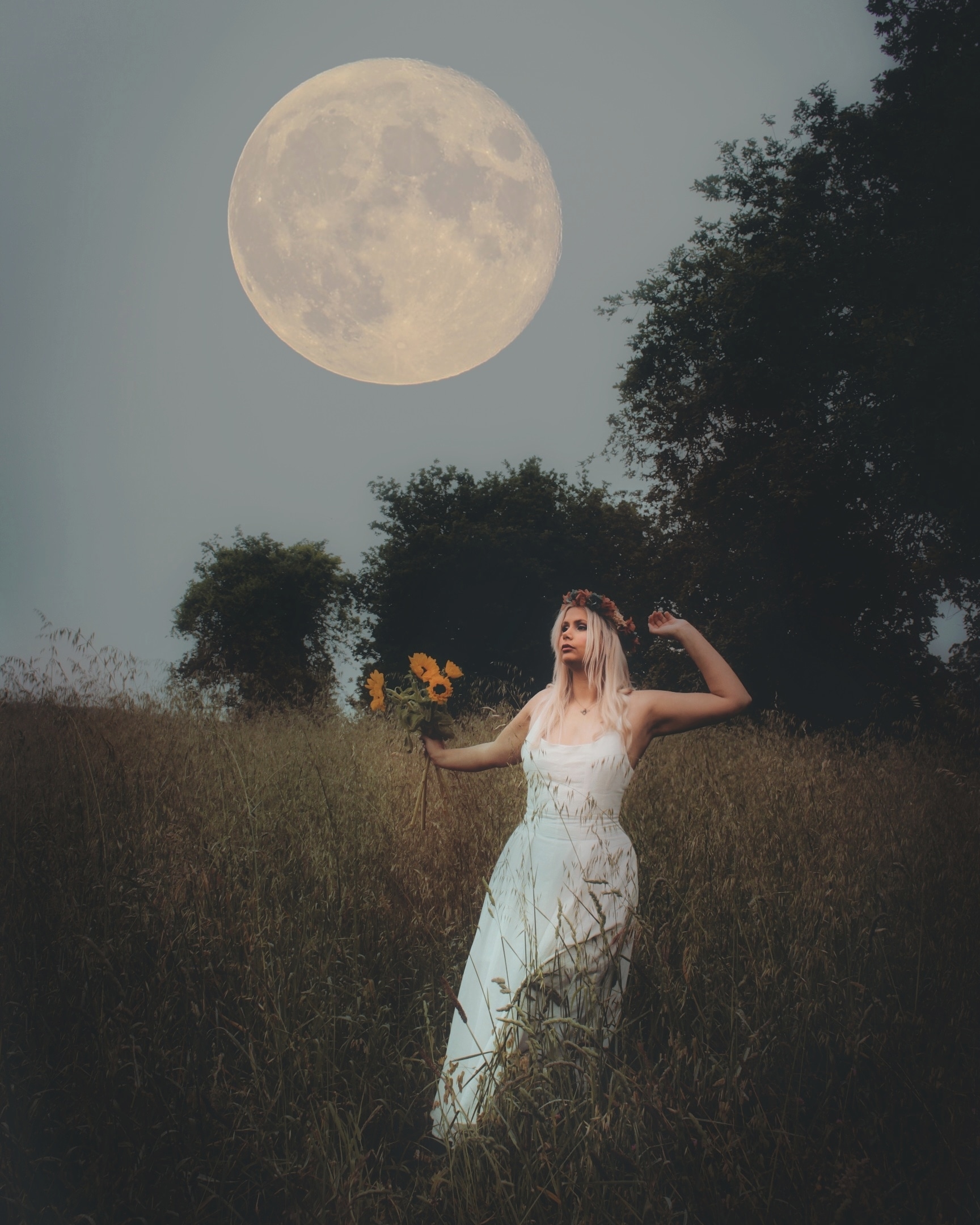 @thebunnyboudoir in a gorgeously transcendental setting. As a horror fan, she frequently incorporates these kinds of spaces.
@thebunnyboudoir in a gorgeously transcendental setting. As a horror fan, she frequently incorporates these kinds of spaces.
As beautiful and awe-inspiring the content we see online is, this aesthetic sadly has its fair share of negative aspects, which are widely ignored or misinterpreted especially by young Gen Z participants, who are notorious for shortly immersing themselves in hot trends whilst the hype lasts, but quickly turning to the next one shortly after, perfectly reflecting how fashion cycles currently develop to become shockingly short-lived to an unprecedented extent.
This approach culminates in an artificial desire to reinvent one’s own style literally every few weeks, so we cannot help but wonder: is this aesthetic really as wholesome, sustainable, and supportive as it seems? A hard question to answer because, after all, things are not always black and white. Therefore we will take a closer look at the other side of the coin throughout this second part in an attempt to unveil some lesser-known realities of the Cottagecore trend.
To Put It Straightforwardly, Why Is Cottagecore So White?
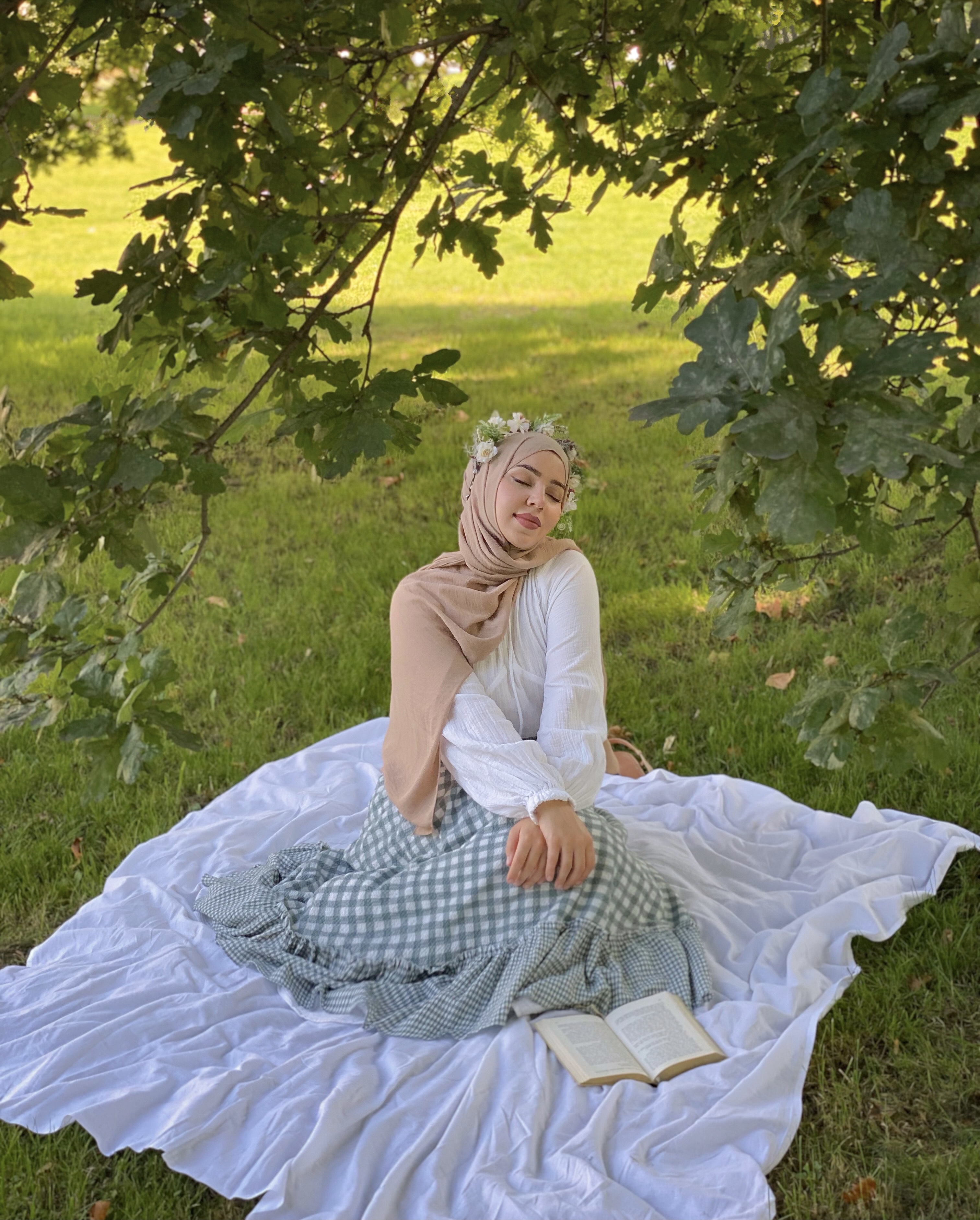 Ph. courtesy of Sinem Bahadir
Ph. courtesy of Sinem Bahadir
Sinem Bahadir aka @sinembhd is a popular Germany-based influencer, fully embracing the Cottagecore vibe. She is an inspirational, positive example of diversity. In wearing a hijab, she fiercely signalises pride in her heritage, permeating all unspoken limitations that some within the movement might want to impose. In that, Sinem's dreamy images encompass a message beyond beauty. Everyone can partake in any kind of aesthetic, no matter their nationality, religious belief, gender, or looks. An important message to convey, indeed.
To start this off, let us tackle the most prominent and heatedly debated matter. A huge lack of diversity is more than apparent within the digital movement, to a point that a controversial debate on whether Cottagecore is inherently racist erupted. This issue has been widely discussed in public discourse, both in a myriad of articles and YouTube videos. The first thing appearing on the screen when typing in Cottagecore, be it on any social media app or simply Google, is a bunch of prototypically beautiful, young, slim, white women standing in countryside fields, wearing vintage-inspired attire. Is this due to the respective platform’s algorithm favouring white people’s content on account of their programming, or are there actually so few people with other ethnicities and body shapes embracing the aesthetic?
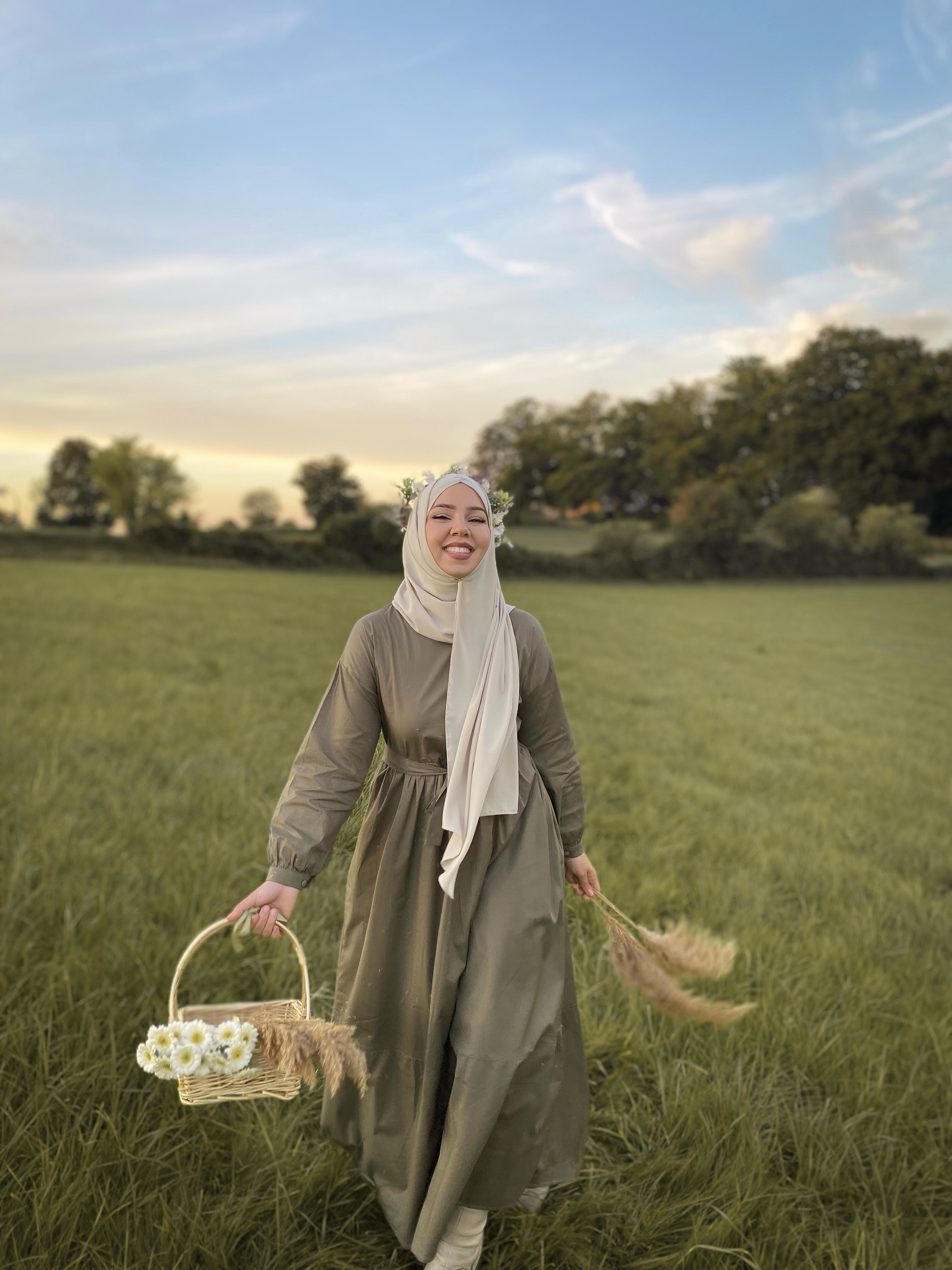 @sinembhd sees herself as a visual storyteller, hence indicating to her following that there is more to pictures than meets the eye. Partaking in the Cottagecore aesthetic is certainly not limited to the British landscape. Living in Germany, she showcases that beautiful places fit for retreat into nature can be found anywhere in the world. We highly recommend taking a look at her feed. Prepare to get lost in a dreamy world of truly magical photographs, displaying an alternative and very unique take on Cottagecore. With Sinem you are in for a treat, that is for sure! (Ph. courtesy of Sinem Bahadir)
@sinembhd sees herself as a visual storyteller, hence indicating to her following that there is more to pictures than meets the eye. Partaking in the Cottagecore aesthetic is certainly not limited to the British landscape. Living in Germany, she showcases that beautiful places fit for retreat into nature can be found anywhere in the world. We highly recommend taking a look at her feed. Prepare to get lost in a dreamy world of truly magical photographs, displaying an alternative and very unique take on Cottagecore. With Sinem you are in for a treat, that is for sure! (Ph. courtesy of Sinem Bahadir)
What is safe to say is that algorithms are created to promote a specific idealised, preferably Eurocentric beauty standard. This has long been common knowledge, though TikTok made it blatantly clear to all its users since it is so obviously repetitive when it comes to outward appearances of the chosen creators that ultimately land on a for you page. Studies suggest that the app rates videos for potential success based on the attractiveness of those in it by means of a beauty assessing algorithm. A machine is able to identify how far an individual’s measurements of certain landmarks of the face deviate from an expected average. The algorithm then measures and evaluates the degree of fit with the previously established ideal, thereby providing a kind of ‘beauty score’. It goes so far as to even pick up a person’s skin texture, lowering Koinophilia (non-normative traits for an attractive face that is) by unevenness, discolouration, and wrinkles.
So, as we could see so far, Cottagecore seems to have a visible lack of people of colour. The issue becomes even more problematic when keeping in mind the negative implications of land ownership and its connection with the slave trade in the British Isles, which was only ended in 1833 by the Slavery Abolition Act. The historical background comes into play, as the aesthetics’ style, especially in clothing and accessories, is vastly reminiscent of bygone eras. Prairie dresses, fancy bonnets with attached lacy bows, Victorian-inspired parasols, gloves, and everything we would associate with the time periods it aims to imitate and take inspiration from. Is it just a harmless dress-up, a true passion for original vintage style, or a deliberate attempt to undermine people of colour, by consciously signalising a harsh exclusivity of the look? To be candid, the reasons behind every individual's choice of fashion can hardly be overgeneralised without being presumptuous. Seeing that most of them are either very young or truly submerged in rural seclusion, holistically embracing a sustainable lifestyle with competence and awareness. In the end, everyone engaging should be careful not to idealise the past while forgetting what context the time period indicated was embedded in.
Escapism At Its Best – Content Polished To Perfection Distorts The View Of Secluded Country Life Realities
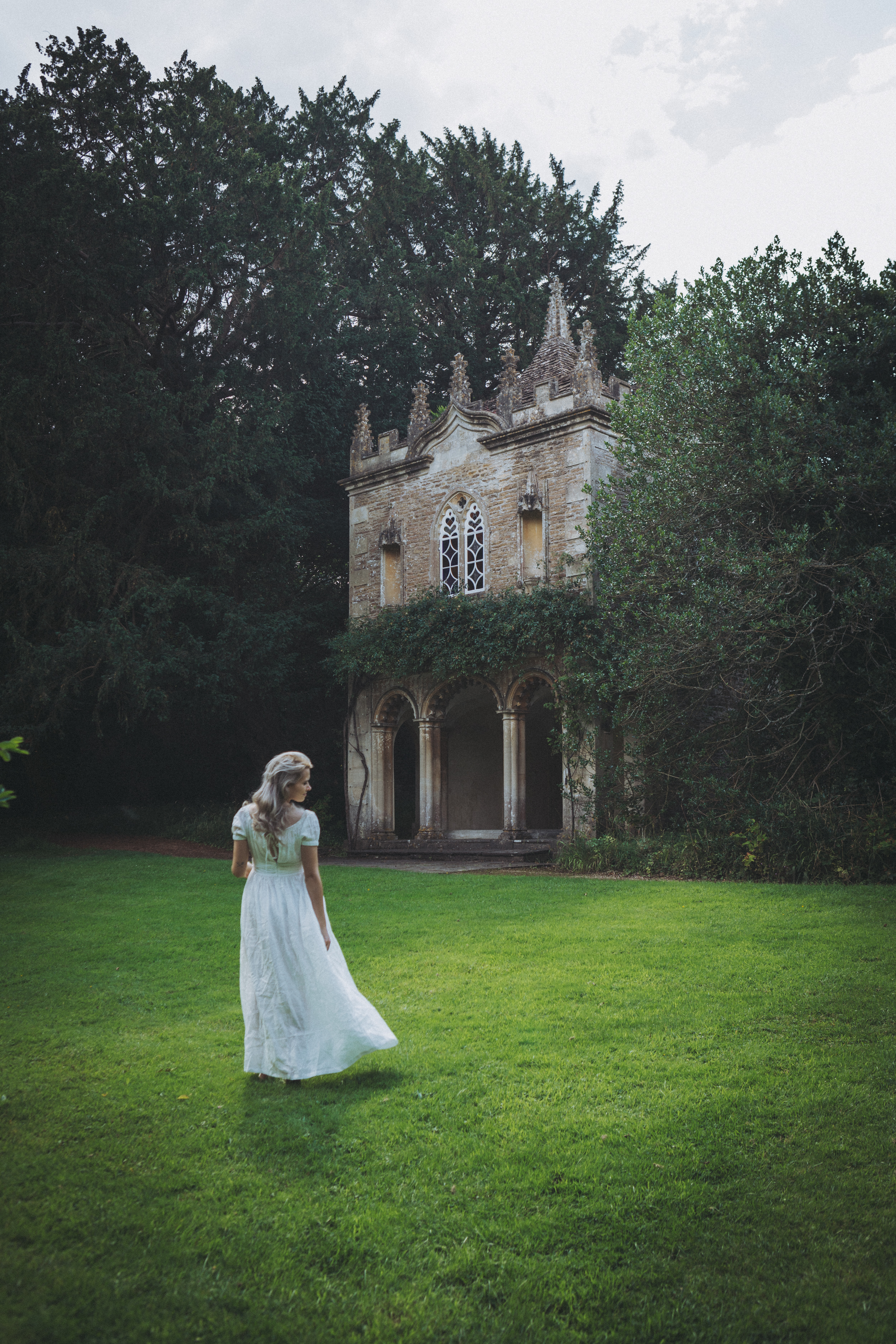 @monalogue, the queen of Cottagecore and her husband @aaron.etc perfected the art of capturing awe-inspiring moments in naturalistic environments, suspending the spectator's reality for a fleeting moment. (Ph. Aaron Gibson)
@monalogue, the queen of Cottagecore and her husband @aaron.etc perfected the art of capturing awe-inspiring moments in naturalistic environments, suspending the spectator's reality for a fleeting moment. (Ph. Aaron Gibson)
A good bunch of those engaging in Cottagecore by publishing their content on social media propagate a highly idealised idyllic landscape, which in fact is far from reality. Sure, the British countryside is breathtakingly beautiful, but living in a secluded cottage takes much more than simply dressing up and sipping some tea in your garden. Not acknowledging the hardship of rural life and work, acknowledging what it actually takes to obtain a cottage is seldom shown. The pictures convey a drastically polished version of what is an escapist fantasy.
In a time when owning property becomes more inaccessible due to constantly increasing market prices, young adults strive for independence from sometimes ridiculously brazen landlords. Their demands and rent increase seemingly come under little state regulation and, especially in big cities, the situation appears to get only worse with time passing. Scoring an apartment in an acceptable area in London feels like mission impossible for youngsters with limited money recourses. Even if you are lucky to claim an apartment, suffering damages or problems with the property is often met with landlord’s inaction, a well-known issue, as both tenant and landlord know that there will always be plenty of people eager to move in instead never mind the state of it. This situation strengthens the inherent desire to own property, the land is significantly cheaper, after all.
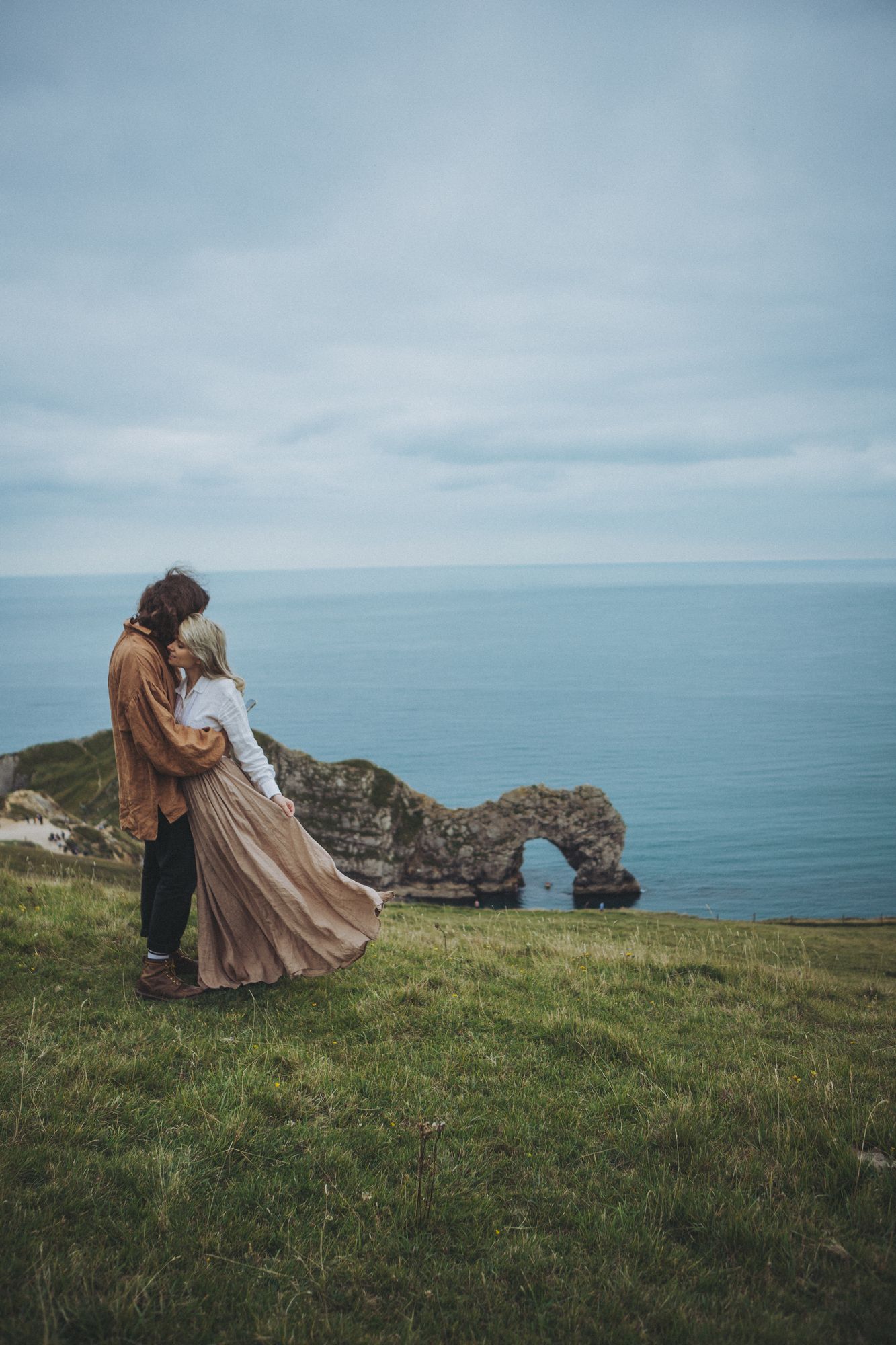 Like a scene straight out of Poldark! Those of you who have read the first part of this series should be familiar with these two. Ramona and Aaron have been in the game for many years by now, though they are not pretending to indulge in a utopic world, but provide informative insights into what obtaining a cottage in the countryside actually demands. (Ph. Aaron Gibson)
Like a scene straight out of Poldark! Those of you who have read the first part of this series should be familiar with these two. Ramona and Aaron have been in the game for many years by now, though they are not pretending to indulge in a utopic world, but provide informative insights into what obtaining a cottage in the countryside actually demands. (Ph. Aaron Gibson)
Ramona Jones aka @monalogue with the aim of sharing her expertise and personal experiences released a book called ‘Escape Into Cottagecore: Embrace Cosy Countryside Comfort in Your Everyday’, in which she openly concedes that the idea of Cottagecore is evoking “a soft, fairytale world”. Notwithstanding, she also opens up about mental health and her own struggles. Dealing with sensory and social issues as a child, staying at her grandparents in the countryside felt like a safe place, a “haven from the rest of the world” where she could be herself, free of any judgement or constraints. This early on kindled her love of nostalgia and rustic life. It just so happens to have become a trend recently. Ramona successfully passes on her knowledge, personal recommendations, alongside tips and tricks ranging from herbology to mindfulness. It is true that you do not necessarily have to live in the British countryside, cut off from any kind of technology and isolated from everyone else, to experience what the movement is about, visually or in a deeper sense in its core values and aims. This brings us to the next conspicuousness: technology.
As Contradictory As Its Oxymoron Name – Is It Detoxed Relaxation If Every Step Is Filmed And Put Online?
The paradox is more than clear, the Cottagecore trend champions anti-modern attitudes towards everything that is wrong with our fast-paced city lives and hustle culture, but it seems to primarily exist and thrive in modern spaces through public sharing on social media and online platforms. Maybe though, that antithesis is one of the aesthetic's greatest strengths. Rather than demanding unrealistic attempts to completely ditch modern devices and technological progress, it appears to encourage a reassessment of modern values. It may even offer a bridge between the past and a more sustainable future. As inherently social beings, humans completely shutting themselves away, in the long run, would actually be an unnatural thing to do. Finding like-minded people online to connect with in times when socialising in real life became a struggle, bears a huge potential for some.
Aesthetics intentionally inspire an emotional response, often instilling a sense of calmness and evoking a soothing effect within us. Due to our unlimited access to all forms of art on demand, we increasingly crave beauty and have developed a longing for the picturesque, thereby trying to incorporate it into literally everything. It becomes problematic however when recorded moments get fixed to such a degree that they are not accurately representative of reality and are amended to what we want them to be, rather than what they really are. Yet, there is a distinction between dramatically edited posts, where alterations are noticeable at first glance, and the currently favoured approach of editing to a lesser degree. This quickly leads to a coincidence of reality and fiction, blurring the lines further and further, while distorting the views on what is shown. It gets dangerous if users fail to further reflect upon the content they engage with.
An Outlook
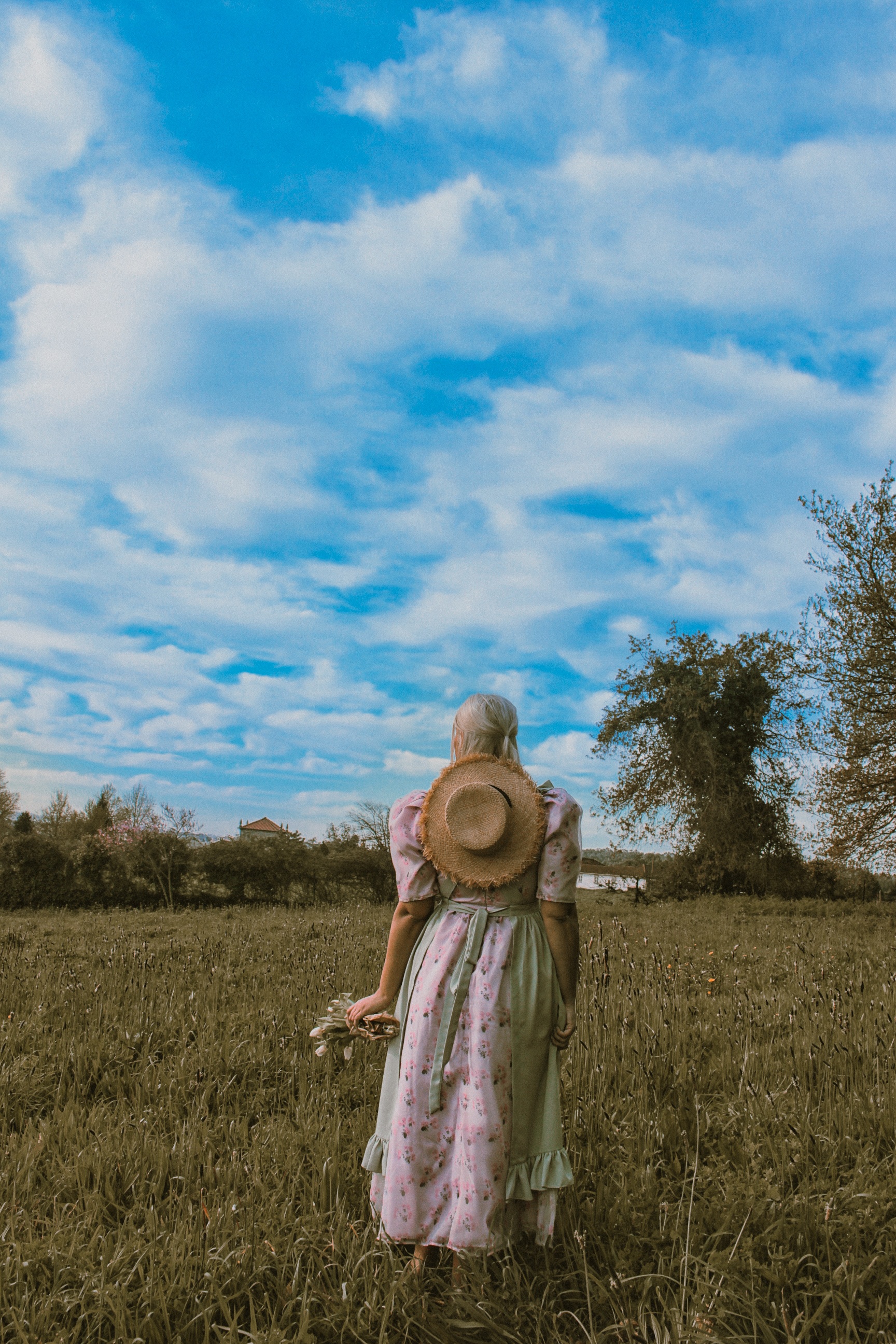 @thebunnyboudoir, shown in everything that makes a Cottagecore enthusiast's heart beat a little faster. Floral patterned ruffle dress, pinafore, a straw hat, and of course some fresh flowers. (Ph. courtesy of Melody Cardoso)
@thebunnyboudoir, shown in everything that makes a Cottagecore enthusiast's heart beat a little faster. Floral patterned ruffle dress, pinafore, a straw hat, and of course some fresh flowers. (Ph. courtesy of Melody Cardoso)
Despite the many downsides, what has been exemplified here shall not overshadow the various positive ways Cottagecore has actively promoted positive activities and values in the public eye. Sustainability, taking globalisation seriously, freedom of heteronormative norms, mindfulness, meditation, looking inwards, paying attention to personal well-being, educating yourself through reading, anti-capitalism, challenging the belief that all progress is good, and so much more – to an extent that listing everything here would certainly go beyond the scope.
In the context of a global pandemic a little dose of escapism should not necessarily be a bad thing, it may very well have helped some to overpass the time between amplification and easing of restrictions. Many activities are congruent with traditional housewife work; however, not everyone seems to be fully aware of the negative historical implications. Ultimately, the motto should be: 'vintage style, not vintage values '.
In the long run, it can indeed become a lifestyle, existing outside the internet or simultaneously without being dominated by it.
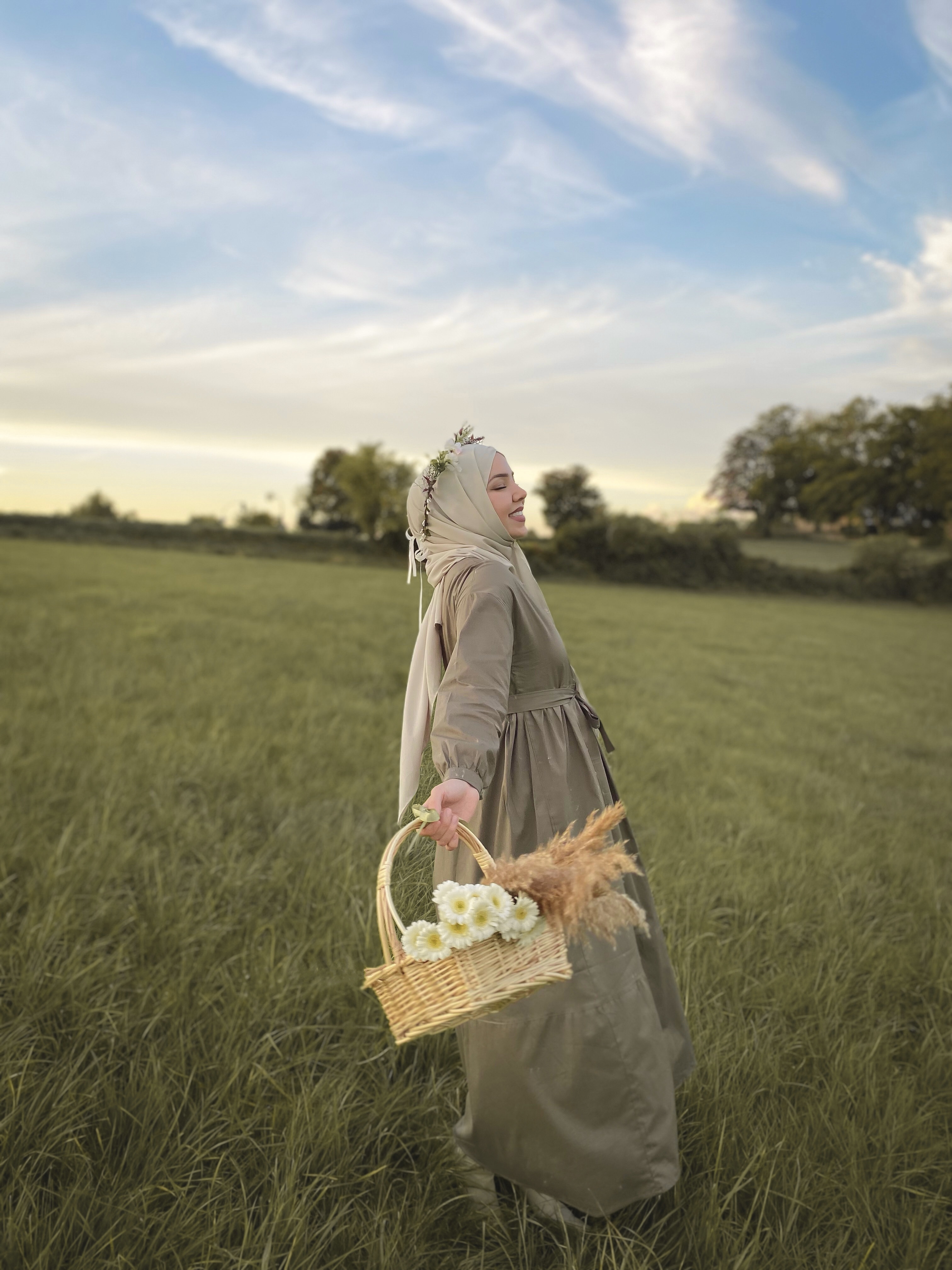 Ph. courtesy of Sinem Bahadir
Ph. courtesy of Sinem Bahadir
This article is by no means supposed to ridicule anyone committed to this movement, but rather an attempt to raise awareness on some less discussed shortcomings which are easy to dismiss and overlook. All content creators featured throughout this article are enlightened and knowledgeable about the aesthetic they engage in, and they are a truly delightful addition to the scene with their stunning visuals.
Those who are still most prone to perfunctory misconceptions are teenagers, especially those who just recently discovered Cottagecore. A huge contributor to this is the set limitations of some social media platforms. Instagram has been around for quite some time now, the difference to TikTok though lies in the extent of content that can be shared. On Instagram, each creator can elaborate on the visuals in lengthy texts underneath. On TikTok, instead, the time span for videos was limited to merely 15 seconds until most recently, when the company decided to bulk it up to 60 seconds. Users are therefore provided with a very narrow time frame to convey a message beyond the perceptible. Quite a challenge! The majority of people within the community certainly mean no harm, nor should any bad intentions be at play. With everyone having the recourses to further research the topic straight from their mobile, it lies in everyone’s responsibility to do so by means of trustworthy sources before immersing head over toes into something new, unaware and in ignorance.
The Rise of Cottagecore And Its Connection With Escapism
When your only association with secluded pastoral life is mud and dust then think again, this aesthetic has been stylised to such popularity that youngsters want to ditch the city life altogether!
Comparable to Romanticism in the late 18th century, something new but on a closer look quite alike has been proliferating throughout 2020 and 2021, the British Cottagecore aesthetic.
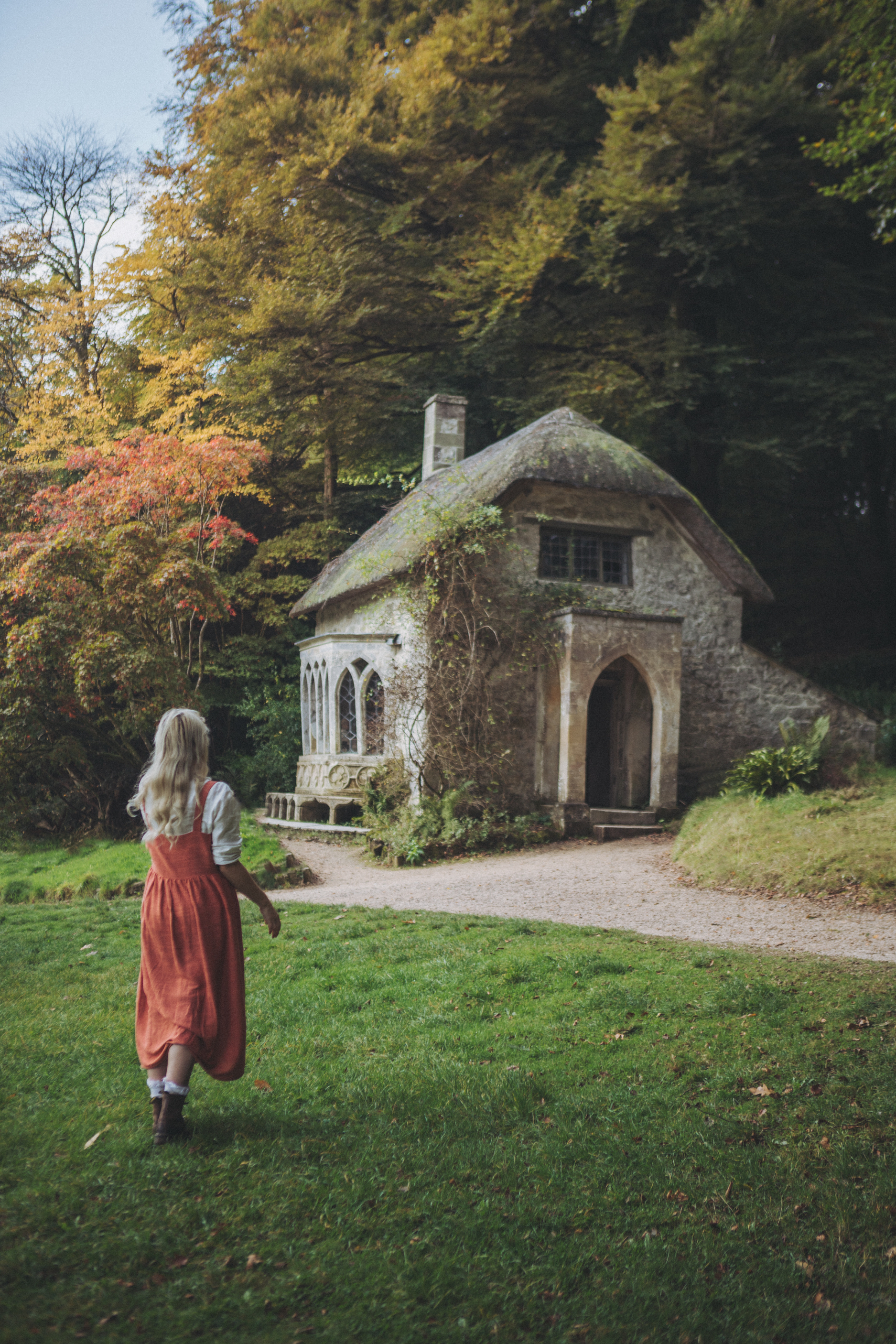 Ramona Jones aka @monalogue pictured in front of a cosy thatched roofed cottage. She and her husband @aaron.etc give their loyal followers breathtakingly beautiful glimpes into life from their holistic English countryside cottage.
Ramona Jones aka @monalogue pictured in front of a cosy thatched roofed cottage. She and her husband @aaron.etc give their loyal followers breathtakingly beautiful glimpes into life from their holistic English countryside cottage.
Ph. Aaron Gibson
A Brief Look Into The Past
Let us take a short historical recap and look back to its probable predecessor to grasp this trend’s roots and overlapping aspects. Romanticism was a reaction against the preceding Neoclassicism, as well as the emerging Enlightenment and Rationalism movement brought about by the French Revolution’s key concepts and later inspired nationalist movements throughout Europe. Romanticism encompassed a strong rejection of the view that reasoning itself is a source of knowledge or proof, further scientific progress, urbanisation, the Industrial Revolution, and its growing focus on materialism at that time. Huge factories did not only destroy major parts of natural landscape, but unimaginably long hours of monotonous toil quickly unveiled various negative consequences on society and people’s psyche. Urbanization eventually forced them to flood the cities for employment. Romantics contrasted these watershed events by shifting their focus back to the individual, harmony, the emotional, the transcendental, and a renewed interest for retreat into nature. In short, it culminated in a profound shift in sensibility (Austen’s romance novel ‘Sense and Sensibility’ perfectly encapsulates the movement’s key agenda in its title). Hence, extreme assertion of the self, alongside a heightened value of the individual experience dominated their works.
Similar characteristics can now, over 200 years later be seen in the Cottagecore aesthetic, which is currently filling our Instagram, Pinterest, and TicTok feeds like nothing else.
So, how can it be that similar aspects apply to this youth lead aesthetic despite evolving under completely different circumstances? We will dive into that question later on!
What The Hell Is Cottagecore Even About?
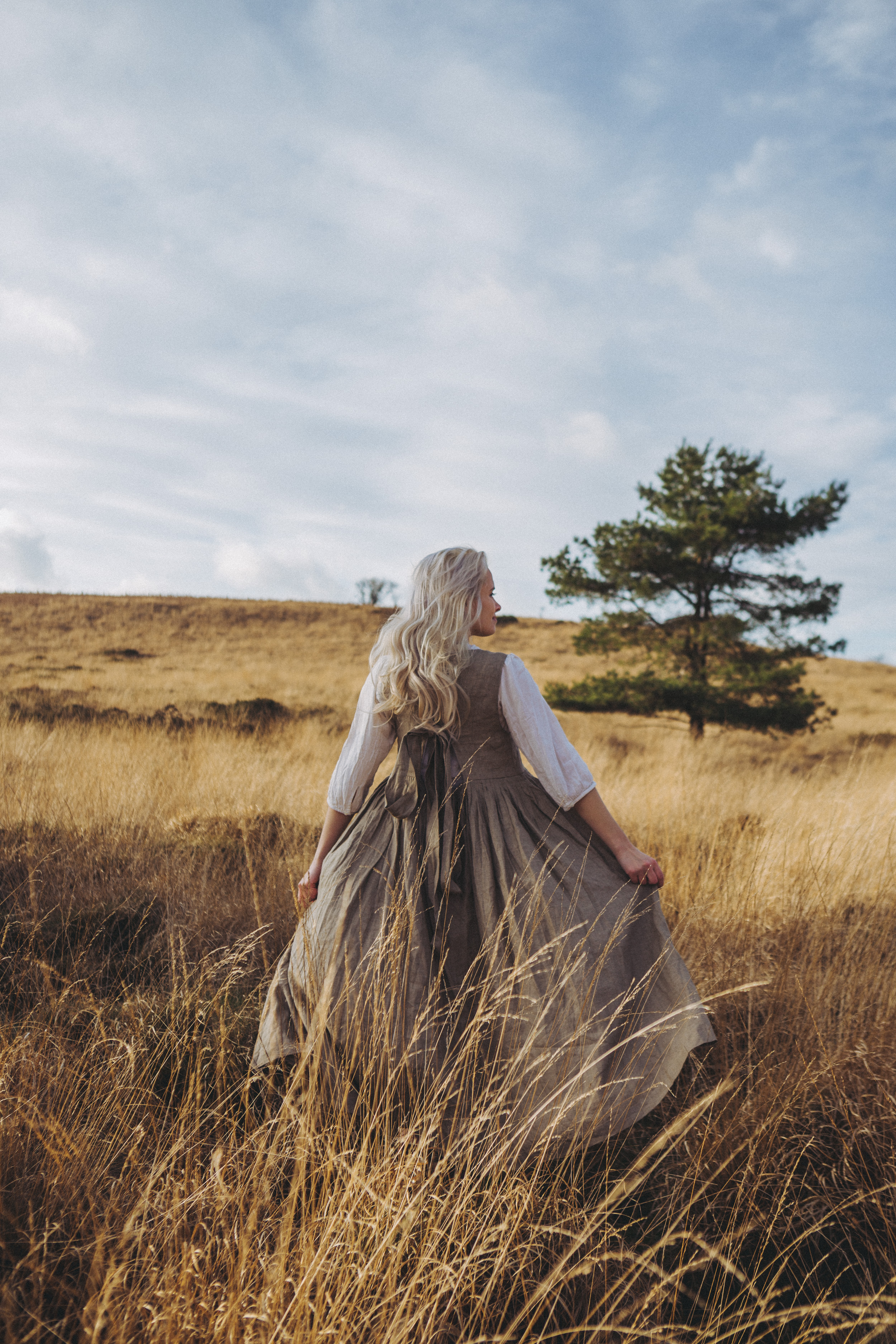 Ramona buys lots of her gorgeous, floaty vintage dresses pre loved in alignment with her sustainability values. The couple frequently shares their travel adventures across the UK, alongside mindful baking receipts, photography, personal thoughts, and lifestyle. All those gorgeous historical buildings, natural landscape, and retro fashion content will inspire you to head out and discover its beauty firsthand.
Ramona buys lots of her gorgeous, floaty vintage dresses pre loved in alignment with her sustainability values. The couple frequently shares their travel adventures across the UK, alongside mindful baking receipts, photography, personal thoughts, and lifestyle. All those gorgeous historical buildings, natural landscape, and retro fashion content will inspire you to head out and discover its beauty firsthand.
Ph. Aaron Gibson
First things first, what exactly is the Cottagecore aesthetic?
In a nutshell Cottagecore celebrates a highly idealised rural life and nostalgia for the countryside, emphasising overall simplicity and reclusive activities like gardening, baking, sewing, reading poetry, painting etc. Already present on Tumblr in the 2010s (the blueprint for so many trends at the moment) it underwent a huge resurgence most prominently due to the rapid growth in popularity of social media platform Tic Toc, later tripling down to the likes of Instagram and Pinterest. This in itself can be traced back to teenagers and young adults all around the world being stuck at home, facing lock down after lock down, and as the saying goes “boredom sparks creativity “. However, there is also a much deeper psychological reason for this. The pandemic promptly took away our fast-paced life routines forcing us into a collective isolation. We have all had to adopt to a slower pace of life after all. Cottagecore indeed champions exactly this notion of solitary retreat and approaching things with an eased and calm mindset. A return to simpler times if you want so, living in appreciation and harmony with nature, basically an archetypical antithesis to modern hectic and technology-based life.
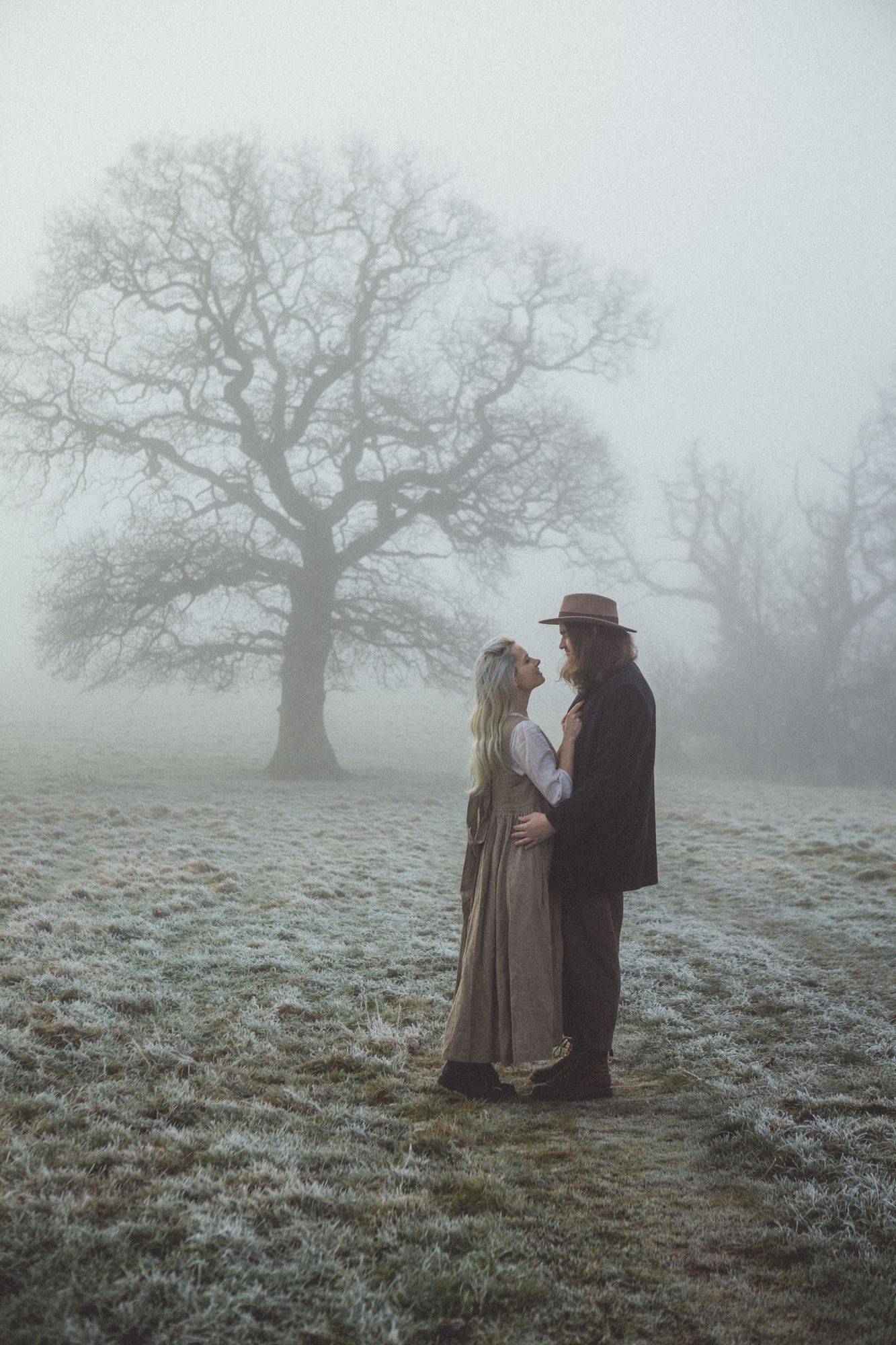 Ramona (@monalogue) and Aaron (aaron.etc) midst a sublime foggy scenery. The two are part of the community's ogs, creating a genuine and authentic insight into the beauty mother nature has to offer.
Ramona (@monalogue) and Aaron (aaron.etc) midst a sublime foggy scenery. The two are part of the community's ogs, creating a genuine and authentic insight into the beauty mother nature has to offer.
Ph. Aaaron Gibson
We all remember when taking a walk outside literally became the highlight of a day, right? That is precisely when we learned to appreciate the little things. Aesthetic trends are usually a result of cultural events happening around us and therefore can be traced back to impactful historical events, be they stretched out over a longer time period or a single event. With Cottagecore quarantine suddenly became romantic, even fun, instead of tremendously terrifying and the epitome of uncertainty and loss of control.
Naturally this also transcends into architecture, home interior, music (Taylor Swifts indie rock album Folklore is praised as the ultimate Cottagecore record) and above all fashion. Think wide flowy white and crème toned dresses, peasant style blouses, billowing skirts, and of course the infamous prairie dress with all its ruffle hems, statement collars, frills, and puff sleeves, preferably paired with minimalist make up (yes, I am referring to the renowned no make-up make-up look) and either long open, -or braided hair. Straw hats are a must, for all those picknicks in the sun, so are rich retro embroidery, floral prints, solid earthy colour schemes and lots of knitwear pieces, ideally handcrafted.
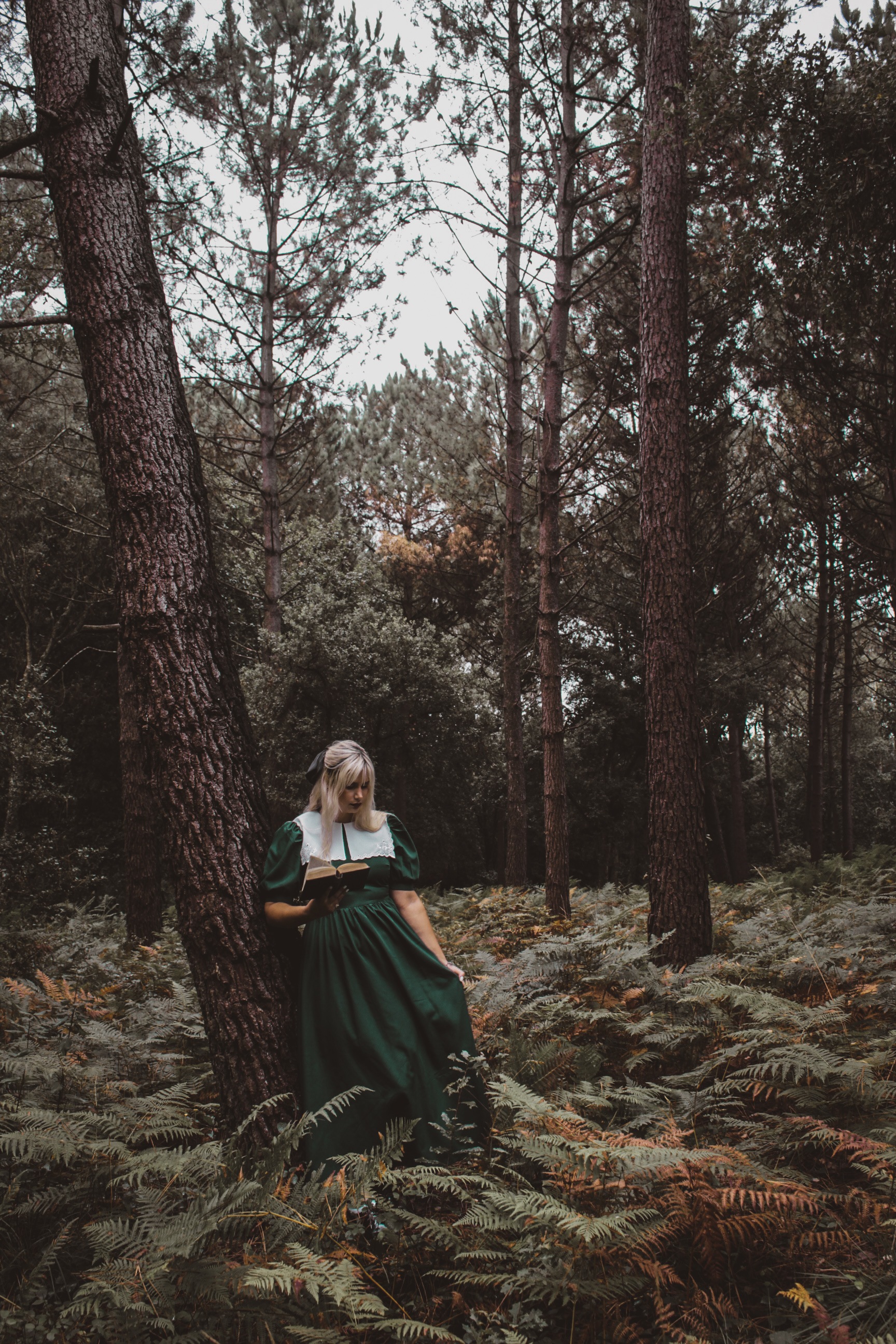 Melody Cardoso aka @thebunnyboudoir frequently presents muted colours in her unique take on Cottagecore. She sucessfully transmits a somber vintage witch vibe, partly leaning into dark academia aspects. Reading classical literature is an equally praised activity in both communities.
Melody Cardoso aka @thebunnyboudoir frequently presents muted colours in her unique take on Cottagecore. She sucessfully transmits a somber vintage witch vibe, partly leaning into dark academia aspects. Reading classical literature is an equally praised activity in both communities.
Ph. courtesy of Melody Cardoso
As the style is very much linked to- as well as rooted in by gone eras you can dress the part by thrifting clothes and buying 2nd hand, resisting the temptation to buy fast fashion knock offs which merely imitate the real deal. If going down this road, the aesthetic is actually quite accessible when it comes to fashion at least. Other aesthetics like the hype beast, where a vast amount of designer pieces is a strict prerequisite to partake, are financially more high maintenance in comparison.
The Queen Of Style Already Did It Prior To The French Revolution
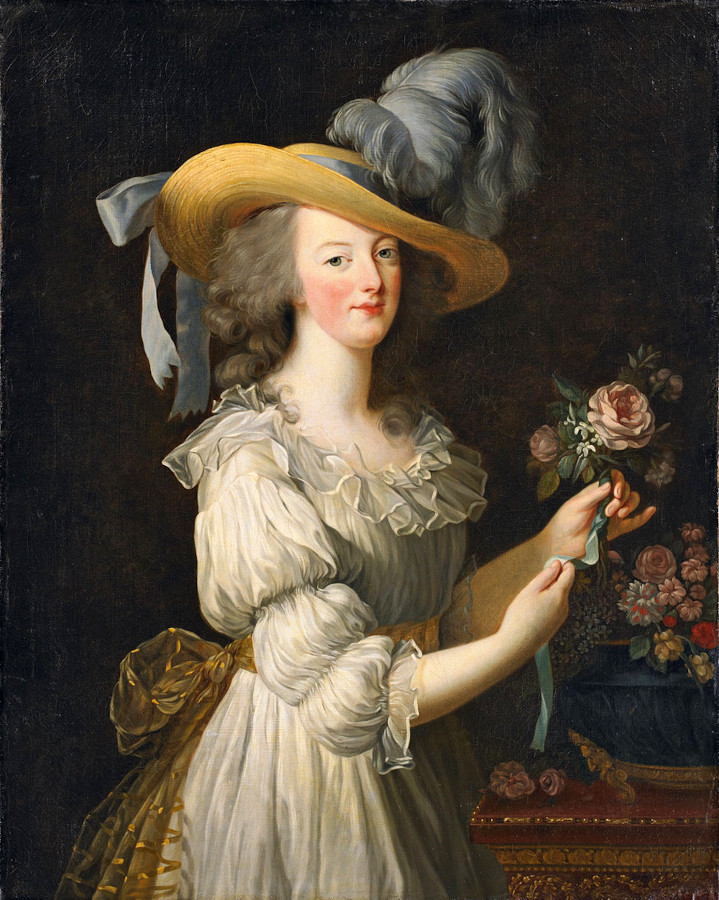 The infamous 1783 portrait by Elisabeth Louise Vigée Le Brun shows Marie Antoinette in a Chemise dress. This painting was removed from the Salon shortly after its publication and due to its bad reception was promptly replaced by a new one, featuring the same position, but a different, more "appropiate" dress.
The infamous 1783 portrait by Elisabeth Louise Vigée Le Brun shows Marie Antoinette in a Chemise dress. This painting was removed from the Salon shortly after its publication and due to its bad reception was promptly replaced by a new one, featuring the same position, but a different, more "appropiate" dress.
Romanticising pastoral life and all that is associated with it to unreal heights has been a trend several times throughout past decades, this is definitely not the first time and will not be the last either. Marie Antoinette, histories ultimate fashion icon was gifted the Petit Trianon close to the main palace of Versailles by king Louis XVI as a private get away from the gossiping and strictly protocoled court. Her robe of choice, or more the dress code she likewise imposed upon visitors there closely resembled a chemise, the simple undergarment dress which build the base for the various layers women wore at the time, merely preceeded by stays and a petticoat. Hence, wearing it on the outside was an extremely radical and unconventional thing to do. When Élisabeth Louise Vigée Le Brun published a commissioned painting of her wearing this attire paired merely with a wide-brimmed straw hat and no jewelry at all, public outcry was unavoidable. It was a national scandal, causing immense damaged to an already unpopular monarchy. People thought her immodest (basically wearing what was underwear for all to see since the portrait was exhibited at an openly accessible salon) and not dressing in accordance with her rank and status, whilst condemning her for lavishness if she did otherwise. Aristocrats deducted the queen wearing such an inexpensive textile as cotton emblematic of a breakdown of barriers between the classes which they were obviously more than keen on upholding for their own benefits. It was made of several layers of very fine cotton muslin, with cotton also being the material used for underwear this specific choice of textile further showcased the informality of the dress in its context. Additionally, it was an imported fabric, making it very expensive, leading to accusations of Marie being responsible for ruining the French silk industry, as what she wore naturally became the height of fashion for everyone else. Keeping something spot clean white was also substantially laborious and time consuming, accordingly reflecting the privileged status of the wearer. Lastly, the aspect of class transgression must have been deeply offensive. What we see is a queen’s idea of what a peasant or shepherdess might dress like, quite patronizing for those who didn’t play dress up but had to work for livestock and survival.
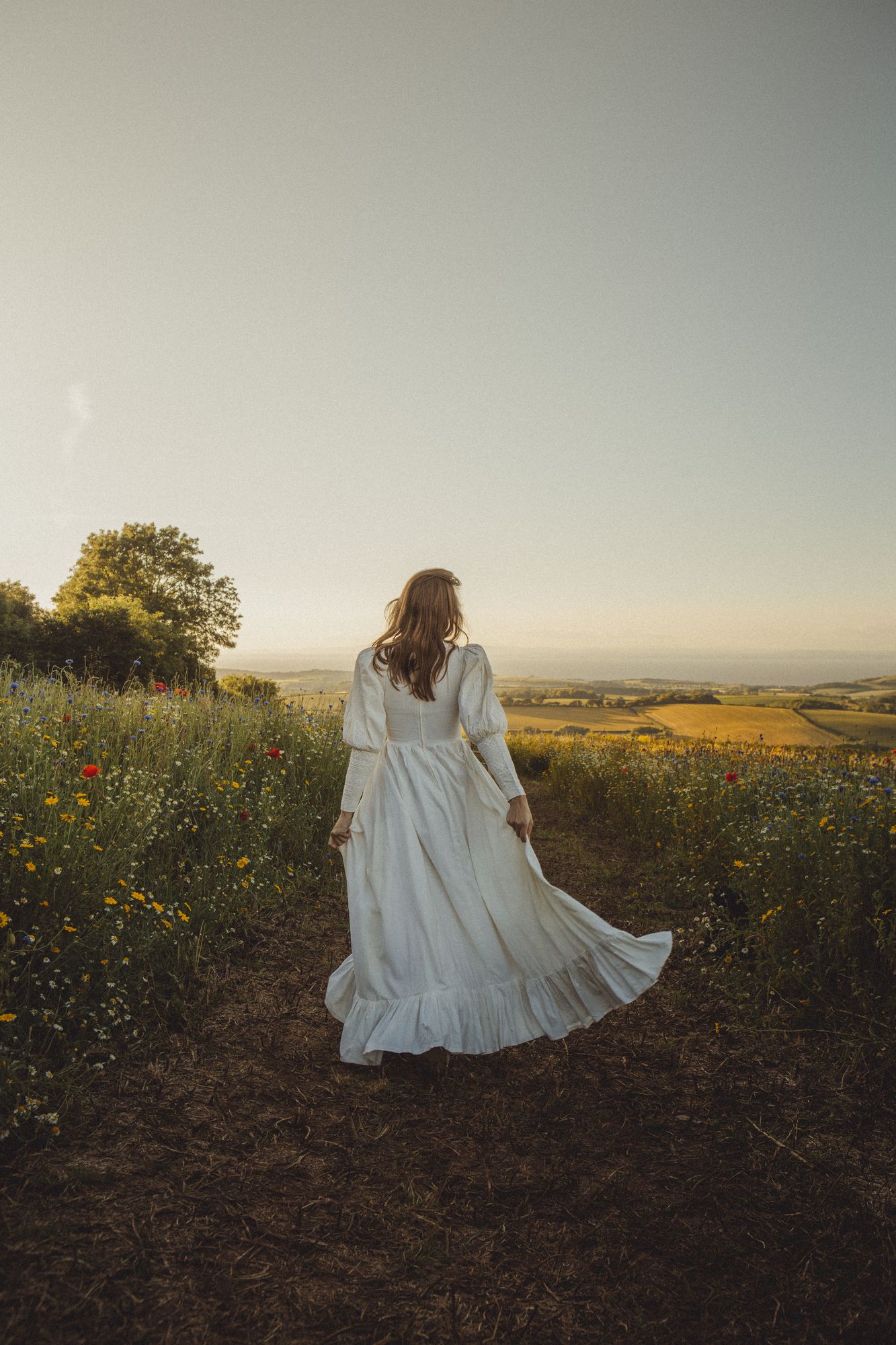 This fairy esque, etheral white dress could very much be interpreted as a modern day take on the Chemise. The lightweigth feel transmitted by this breathtaking shot is probably what Marie Antoinette must have felt like at the Petit Trianon in a style of dress giving her the symbolical freedom she gernerally urged for in her life.
This fairy esque, etheral white dress could very much be interpreted as a modern day take on the Chemise. The lightweigth feel transmitted by this breathtaking shot is probably what Marie Antoinette must have felt like at the Petit Trianon in a style of dress giving her the symbolical freedom she gernerally urged for in her life.
Ph. Aaron Gibson
A dive into fashion history nevertheless discloses that she was simply ahead of her time as the chemise became a popular garment shortly after with many aristocratic, even prominent women within France as well as abroad like Georgina, Duchess of Devonshire having their portrait taken in embellished versions.
Thereafter this type of garment became known as “chemise à la reine”. It consisted of thin white, airy, and loose fabric, usually cinched at the waist with a sheer sash to create some form, (a radical departure and complete contrast to the stiff, sumptuous and extravagant French court gowns the queen would wear to all other occasions, which artificially extenuating an hourglass silhouette by means of extremely tight corsetry and enormous structured Robe à la français hoop skirts.
Why Is It So Popular Right Now?
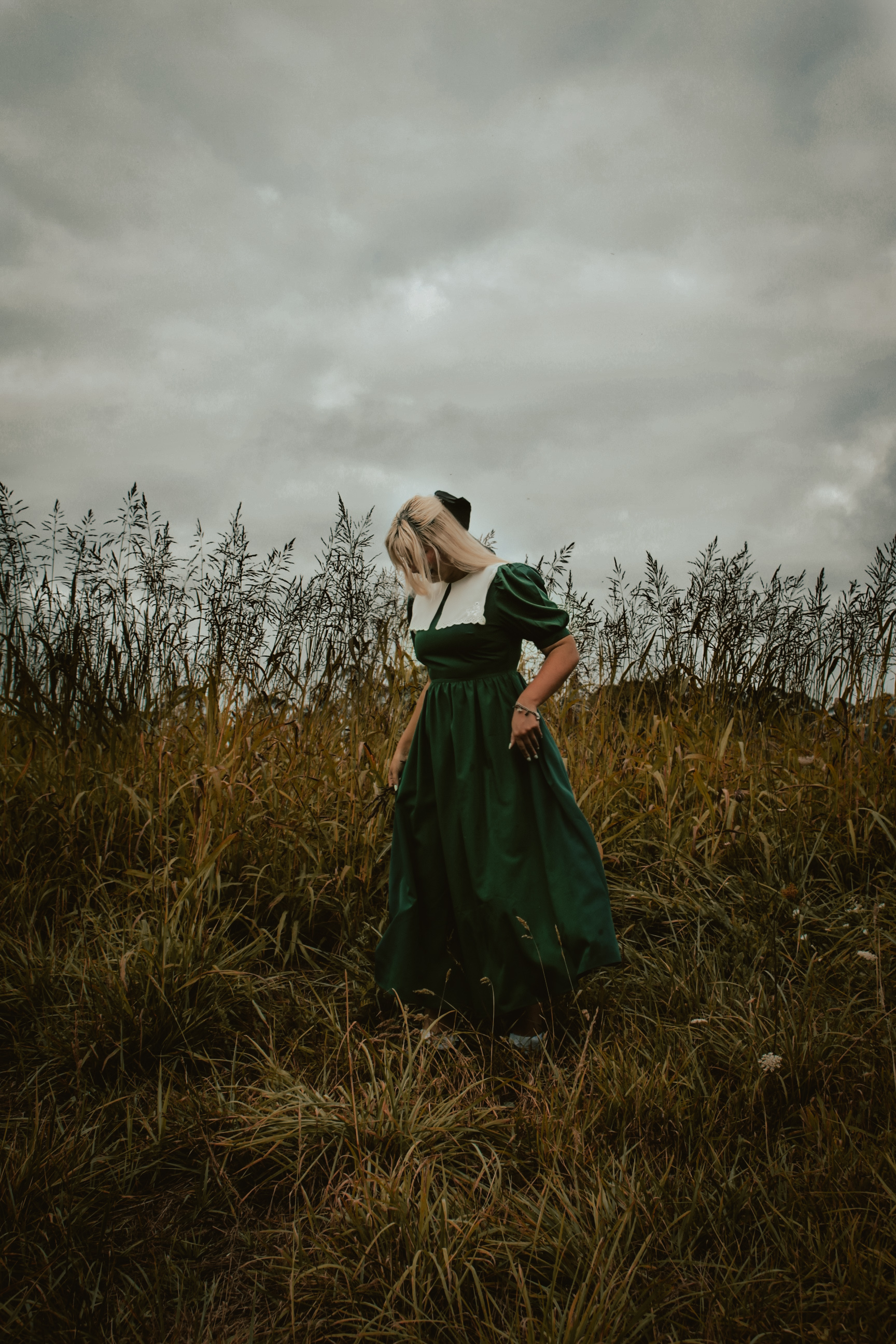 Melody Cardoso, aka @thebunnyboudoir stuns in a dark forest green retro dress, featuring a retro Peter Pan collar, transporting us back into another era. The cherry on top? An ultra feminine hair bow!
Melody Cardoso, aka @thebunnyboudoir stuns in a dark forest green retro dress, featuring a retro Peter Pan collar, transporting us back into another era. The cherry on top? An ultra feminine hair bow!
Ph. courtesy of Melody Cardoso
Advancement in technology increased these issues, more than ever we are surrounded by compulsion to be productive 24/7, typing away on our laptops or keeping notes on our mobile whilst on the tube, during dinner, or even late at night in bed. We are just never not working anymore. Being confined home had many people redefine their work life balance and concurrently see the faults in workaholism, leading to a reassessment and evaluation of modern values. This growing rejection of constantly present hustle culture and performative pressure, be it school, Uni, or the workplace, finally counters the shallow stylisation of what is a straight road to burnout, which peaked in the early 2010s.
In response to the financial crisis of 2007-2008, society became blatantly aware of the financial system’s vulnerability. Due to this instability the post-Recession era was marked by over stylised and highly aestheticized representations of toxic performative productivity and hustle culture. An attempt to ensure economic bettering was praised and developed into a desired lifestyle, defining one’s identity, and invading all aspects of life. It was not only about working long hours anymore, you also had to love and brag about it. Therefore, the key aspect of domestic productivity in Cottage Core turns this notion (which still upholds today) upside down. The aesthetic basically forms a counterreaction against the core elements of our capitalist-consumerist society values, encouraging a critical analysis. The belief that solace in the natural world is spiritually nourishing and a potential cure for all anxieties infiltrating our modern life is veritably a timeless notion. Moreover, it forms a fictional place, free of social constructs and boundaries regarding a wide range of fields, almost a kind of Utopia. Prominent examples are religious and spiritual tolerance, green and eco-conscious consumption, nullity of negatively connotated gender stereotypes and categorising. Subsequently, the scene is a safe space for lots of queer people to thrive, feel supported and comfortable, juxtaposing the general notion that experiencing harsh rejection and exclusion is much more prevalent in rural areas and town fringes.
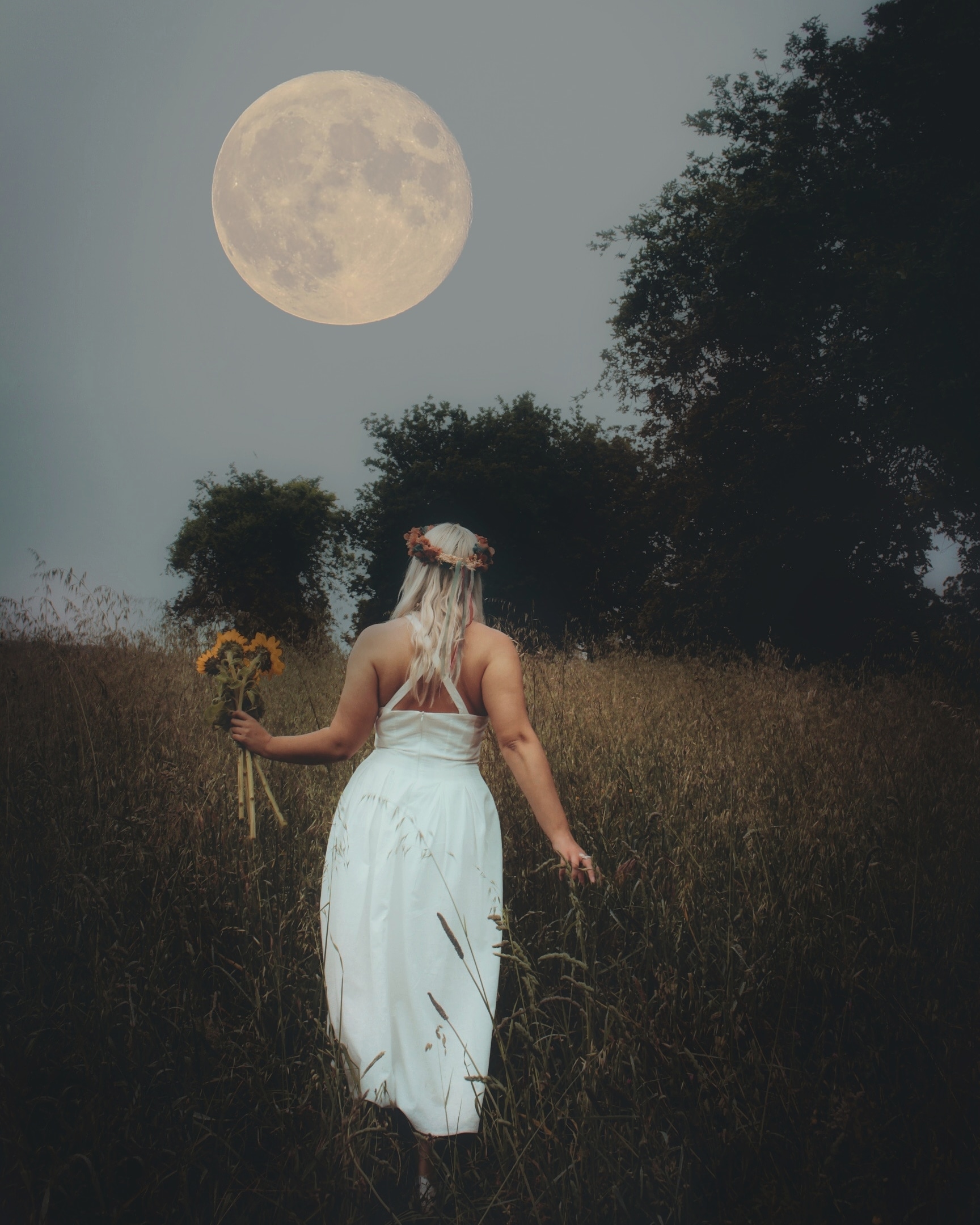 An otherwordly atmosphere can create escapist opportunities to daydream yourself into an otherwise inaccessible surrounding. Content creator @thebunnyboudoir is especially skilled in capturing enchanting shots like this.
An otherwordly atmosphere can create escapist opportunities to daydream yourself into an otherwise inaccessible surrounding. Content creator @thebunnyboudoir is especially skilled in capturing enchanting shots like this.
Ph. courtesy of Melody Cardoso
The rise of this movement clearly fits into the current worldwide situation. With Gen Z making up a majority of its participants, the positive outlook and aim to preserve nature feeds into this generation's unmatched evironmental consciousness and sustainability efforts entailed by it.
Follow us on Instagram @ fashionsfinestuk

